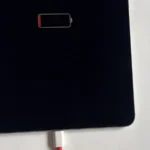High Dynamic Range, commonly known as HDR, is a feature on iPhones that enhances photo quality. It works by taking multiple shots at different exposures and blending them into one image. This process captures more detail in the light and dark areas of a photo. With HDR, iPhone users can get a more balanced image with improved highlights and shadows.
Turning on HDR on an iPhone is simple. Users need to open the Camera app and look for the HDR option, which might be automatic or manual depending on the model. For example, on newer iPhones like the iPhone XS and later, Smart HDR takes this a step further by automatically providing better exposure in moving scenes. However, if someone has an older iPhone model, they should consider whether their subject is moving. If the subject moves, the resulting image might have some blur as the exposures merge.
What is HDR?
HDR stands for High Dynamic Range, a photography technique that captures a wider range of light and color than traditional photography methods. When you take an HDR photo, your iPhone actually captures multiple exposures of the same scene simultaneously and intelligently combines them to create a single image with:
- Better detail in shadows – Dark areas retain more visible information
- Improved highlights – Bright areas don’t get blown out or overexposed
- Enhanced contrast – Greater distinction between light and dark areas
- More realistic colors – Colors appear more vibrant and true to life
As noted by photography experts, HDR helps create photographs that are more representative of what the human eye perceives, since our eyes naturally adjust to see detail in both bright and dark areas simultaneously (source: CLRN).
How HDR Works on iPhone
When HDR is activated, your iPhone’s camera works behind the scenes to:
- Capture multiple exposures – Takes several photos at different exposure levels in rapid succession
- Analyze the scene – Determines optimal conditions for HDR processing
- Combine intelligently – Merges the best parts of each exposure into one balanced image
- Process automatically – Applies computational photography algorithms to enhance the final result
The camera uses HDR in optimal conditions automatically, determining when the feature will provide the most benefit to your photos (source: Apple Support).
HDR Settings by iPhone Model
The availability and control of HDR settings varies depending on your iPhone model:
iPhone XS through iPhone 12 Series
These models offer manual HDR controls, allowing you to:
- Turn HDR on or off manually
- Choose whether to save both HDR and non-HDR versions
- Access HDR settings through the Camera app
iPhone 12 and Later Models
Starting with the iPhone 12 line, Apple implemented Smart HDR that:
- Automatically applies HDR processing when beneficial
- Works seamlessly in the background without manual intervention
- Uses advanced computational photography for optimal results
The newer models automatically have these settings configured to take the best photo possible without requiring user input (source: iPhone Life).
How to Adjust HDR Settings
For iPhone Models with Manual Controls (XS – iPhone 12):
- Open Settings → Camera
- Locate HDR options:
- Toggle “Auto HDR” on/off
- Enable “Keep Normal Photo” to save both versions
- In Camera app:
- Look for HDR button at the top of screen
- Tap to cycle between Auto, On, or Off
For iPhone 12 and Later:
HDR is automatically managed by the system, but you can:
- Access Photographic Styles for creative control
- Use ProRAW (on Pro models) for maximum editing flexibility
- Adjust exposure manually using the sun icon slider
When to Use HDR
HDR works best in these scenarios:
Ideal Situations:
- Landscapes – Balances bright skies with darker foreground
- Backlit subjects – Prevents silhouetting of people against bright backgrounds
- High contrast scenes – Situations with very bright and very dark areas
- Indoor/outdoor shots – Through windows or doorways
- Sunrise/sunset photography – Captures detail in both sky and landscape
Avoid HDR for:
- Moving subjects – Can cause ghosting or blur
- Low light scenes – May introduce noise
- Already well-balanced lighting – HDR processing may be unnecessary
- Artistic high-contrast looks – When you want dramatic shadows/highlights
Tips for Better HDR Photos
- Keep steady – HDR requires multiple exposures, so minimize camera shake
- Avoid moving subjects – Motion can create artifacts in the final image
- Review both versions – When available, compare HDR and standard photos
- Consider storage – HDR photos are typically larger files
- Use a tripod – For landscape HDR photography, stability is crucial
- Be patient – HDR processing takes a moment longer than standard photos
Troubleshooting Common HDR Issues
Photos look unnatural or over-processed:
- Try turning off HDR for more natural results
- Adjust using photo editing apps post-capture
HDR option not visible:
- Check if your iPhone model supports manual HDR controls
- Ensure you’re using the standard Photo mode
HDR photos are blurry:
- Hold the phone steadier during capture
- Avoid photographing moving subjects
Conclusion
HDR technology on iPhone represents a significant advancement in mobile photography, allowing users to capture images with remarkable detail and realistic color reproduction. Whether your iPhone manages HDR automatically or gives you manual control, understanding when and how to use this feature will dramatically improve your photography results.
The key to mastering iPhone HDR is understanding your specific model’s capabilities and recognizing the right situations where HDR will enhance rather than detract from your images. With practice and the right techniques, you’ll be capturing professional-looking photos that truly represent what your eyes see in the real world.
Key Takeaways
- HDR on iPhones merges multiple exposures to enhance photo quality.
- Newer iPhone models automatically adjust HDR for moving subjects.
- On older iPhones, users should use HDR carefully with moving subjects to avoid blur.
HDR Photography on iPhone
High Dynamic Range (HDR) photography on iPhone combines multiple shots into a single photo. It captures more detail in highlights and shadows. Apple’s Smart HDR improves this further, offering more clarity.
Understanding HDR and Smart HDR
HDR on the iPhone helps capture images with high detail in both dark and bright areas. When you take a photo, the camera quickly takes several shots at different exposures and merges them. Apple introduced Smart HDR with the iPhone XR and XS. This feature uses machine learning to recognize scenes and subjects, adjusting the HDR process for more natural-looking images.
How to Enable and Use HDR on iPhone
To enable HDR on your iPhone, go to the Settings app and tap on Camera. Here, you will find the options for HDR settings. For iPhone models X and earlier, you can choose to enable or disable Auto HDR. On newer models, such as the iPhone 12, Smart HDR automates the process. You can toggle it on for consistently balanced photos. If you prefer manual control, disable Smart HDR and select HDR in the Camera app for each shot.
Exploring iPhone Models and HDR Compatibility
All recent iPhone models support HDR photography. Auto HDR is available by default from the iPhone 8 onwards. The Smart HDR feature started with the iPhone XR and XS and is present in all subsequent models, including the iPhone 12. These newer iPhones use Smart HDR for an optimized photo capture experience. Users can manually activate or deactivate these functions in the camera settings for more personalized control.
Best Practices for HDR Photos
HDR, or High Dynamic Range, photography on the iPhone blends multiple exposures to capture more detail in high contrast scenes. This technique is useful for preserving details in both the shadows and highlights of your photos.
Capturing High Contrast Scenes
High contrast scenes often have a mix of very bright and very dark areas. To capture the full range of light in these settings, use the iPhone’s HDR feature. It works by taking several photos at different exposure levels and combining them into one image. When photographing landscapes with a bright sky and dark foreground, or a portrait against a bright background, HDR helps maintain the details across all areas of your photo.
Managing Shadows and Highlights
In scenes with dynamic lighting, managing shadows and highlights is crucial. The iPhone’s HDR feature can automatically balance the exposure to ensure no part of your photograph loses detail. If you toggle HDR on manually, remember to keep your subject still to avoid a ghosting effect where moving objects appear more than once. To avoid losing details in low light or when shooting a silhouette photo by a window, HDR should be enabled to balance the bright displays and the dark interior.
Editing HDR Photos for Optimal Quality
After taking HDR photos, editing them can further enhance their quality. Use the Photos app to tweak brightness or crop for better composition. For more control, third-party editing software like Adobe Lightroom offers advanced tools to adjust colors and reduce grain. Ensure ‘Keep Normal Photo’ is on in the Settings app to have both the HDR and the standard exposure photo; it allows you to choose the best version later. Remember, motion can create blurriness, so for sharp landscape photos, subjects should be as still as possible during the shot.







